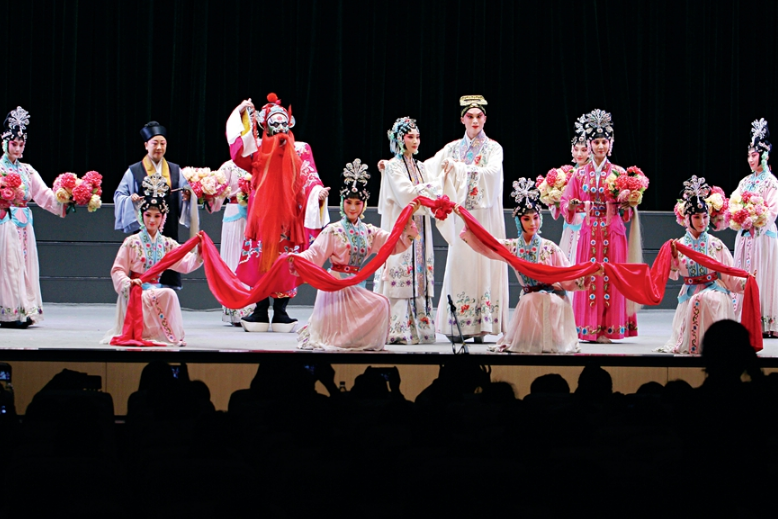Revive an Ancient Opera
China Today,May 28, 2018 Adjust font size:
Modern Adaptation
On December 31, 2017, the Belt and Road Kunqu Opera Theatre gave its first performance – a part of The Peony Pavilion – in Beijing. The play is a masterpiece of Ming Dynasty playwright Tang Xianzu (1550 -1616), and has generated numerous iterations. What set Hao’s rendition apart from others is its stage lighting and setting.
Hao Meng was an assistant to director Zhang Yimou for the opening and closing ceremonies of the Beijing Olympic Games in 2008, and also for the Italian opera Turandot staged in the National Stadium, colloquially known as the Bird’s Nest, in 2009. The experience of working with Zhang opened her eyes to incorporating elements of Chinese culture into stage setting.
For “A walk in the Garden” and “The Interruption of a Dream,” a well-known act of The Peony Pavilion, Hao and her team employed modern video and lighting technologies to create a multi-layered effect and an ink painting illusion, which was well received by the audience. “The modernist setting gives new life to a classical play,” commented a female viewer.
“Traditional Chinese operas like Kunqu should not end up in the museum,” said Han Ziyong, head of the management center of the China National Arts Fund. “The defining trait of arts is sharing. Traditional operas must pinpoint the best way to survive and thrive in modern times, reconciling old-time cultural genes with present-day tastes, or it will lose vitality for long-term development.”

Artists perform Peking Opera acrobatics close to the audience.
The audience is critical in the preservation of any opera, and needs to be educated and cultivated. At the theater’s debut, Hao Meng offered her audience an immersive experience – a display of sumptuous costumes and props situated around the doorway leading to the room of the stage. While observing these items close up, theatregoers could listen to staff members expounding on each one’s function and connotation. There was also a section of shadow play (an ancient form of storytelling and entertainment which uses flat articulated cut-out figures, called shadow puppets, which are held between a source of light and a translucent screen), where live performance was given, and the puppet making technique was demonstrated.
This immersive ambience continued throughout the opera, with the cast performing very close to the audience, and taking questions from them at intervals. The night was also punctuated by a suona (a horn-like woodwind instrument) performance by Zhous’ Band, which is now in the seventh generation, and Peking Opera acrobatics.
Concerning her thoughts behind this design, Hao said, “Artists should take the pulse of cultural heritage, and adopt innovative and technology-enhanced methods. More regard should be given to the audience’s participation and experience, and making the performance more interactive to win their hearts. In this way, the participants will truly fall for traditional culture, inculcate stronger confidence in it, and feel the urge to protect it.”

